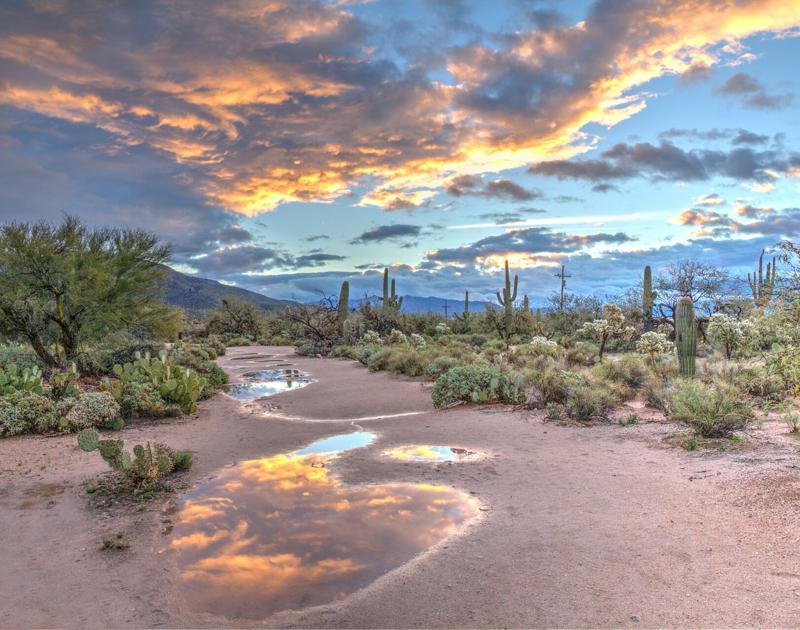(The Center Square) – Four rural Arizona county supervisors are asking for more regulation when it comes to pumping rural groundwater, something that their constituents denied them in 2022.
“It is long past time for the Arizona Legislature to approve a balanced, commonsense, and customizable rural management framework to protect the water future of our rural Arizona communities—most who have no other options to round out their water portfolios,” reads a joint statement from Coconino County Supervisor Patrice Horstman, La Paz County Supervisor Holly Irwin, Mohave County Supervisor Travis Lingenfelter and Yavapai County Supervisor Dona Michaels.
Gov. Katie Hobbs visited Willcox a few weeks ago to address the water shortage issues in rural Cochise County. Willcox officials expressed numerous concerns, noting that one of the town’s two main wells started “pumping air” back in May. This is not uncommon in rural Arizona.
In La Paz County, areas have started sinking, according to records of land subsidence conducted by the Arizona Department of Water Resources. This report shows that ground in parts of the county have sunk over five feet and earth fissures have cropped up due to the loss of groundwater.
Opponents of AMAs have said they are an overreaction to the problem of water conservation and carry a reputation for stunting businesses looking to locate or expand within its jurisdiction.
“It’s a sledgehammer where you need a tuning fork,” Kent Callaghan, winemaker at Callaghan Vineyards, told the Center Square in October 2022. He and others warned that an AMA in the Willcox Basin would put a halt to any growth of the wine industry there. The area accounts for a significant portion of the state’s small group of vineyard owners.
Most of rural Arizona’s groundwater lies outside of an Active Management Area or an Irrigation Non-Expansion Area, meaning that the water supply is neither monitored nor regulated.
However, the ADWR periodically monitors the basin levels in rural areas. While this data is sparse, the ADWR can be sure that the demands on rural basins outweigh the supply.
For example, according to an ADWR 2023 Supply and Demand Assessment of the McMullen Valley basin in La Paz County, the water supply has severely diminished from 1990 when there was 34,602 acre-feet of water available compared to 2022 when there was 8,219 acre-feet.
The biggest draw on rural basins is agriculture as commercial farming is one of the biggest economic drivers in those communities, with agricultural use of rural basins reaching up to 99% of the overall groundwater use.
Prior to the start of the 2024 legislative session, Hobbs asked the legislature to come up with a rural groundwater management plan, but legislators were unsuccessful in being able to agree on bipartisan legislation. Two bills were proposed.
The Republicans proposed SB 1221 which would restrict all users of the Gila Bend, Hualapai Valley and Willcox basins if it is determined by an established board that the basin needs to be managed. If a basin management area is enacted, those users of the basin will be granted a water right certificate, outlining how many acre-feet they are awarded.
Additionally, the bill would shut down the basins to prevent further drilling or expansion and prohibit the moving or selling of water.
However, the counties asking for a plan opposed this bill saying there was too much “red tape.”
Instead, these supervisors supported the Democratic bill which did not receive a hearing in committee. This bill would create a council comprised of local stakeholders. The council would then be able to create whatever regulations they deem necessary.
Republican Rep. John Gillette, who presides over some of the affected areas, said the GOP bill is more “fair,” outlining cuts for every basin user.
“If the basin is that stressed, then everyone has to take a part of the conservation,” Gillette said, noting that the Arizona Farm Bureau is in support of this bill since it would implement in law the amount of water reductions farms would experience.
“Agriculture is a $23.3 billion economic driver for the state of Arizona and accounts for thousands of jobs in the state,” said Phil Bashaw, CEO of the Arizona Farm Bureau. “It’s certainly important to the state, but it’s even more important in those communities.”
In late September, Hobbs sent a letter to Republican legislators saying that both sides of the aisle need to come to a solution for the communities in need.
“We have communicated to you and your staff on multiple occasions that this proposal falls short of achieving a compromise outcome that will allow for future water management in basins beyond the Hualapai, Gila Bend and Willcox groundwater basins,” Hobbs wrote. “It also failed to achieve meaningful, community-driven conservation goals for the future even in the few specifically included basins.”
Additionally, she said in a Sept. 12 press release that if the legislature cannot come up with something in the upcoming session, she is “prepared to take action to protect Arizona’s water and prevent further devastating consequences.”
Gillette said he fears that if the Governor did take executive action, she would establish AMAs in rural Arizona – something that many locals have spoken out against. For example, Willcox voters rejected a ballot proposition in 2022 that would have put the basin in a management area.
“I know that the crisis is urgent,” said Sen. Priya Sundareshan. “There’s only so long they can put off the administrative action hoping legislation occurs. The Republicans who control these important committees have not chosen to hear the bills that would provide those protections.”






